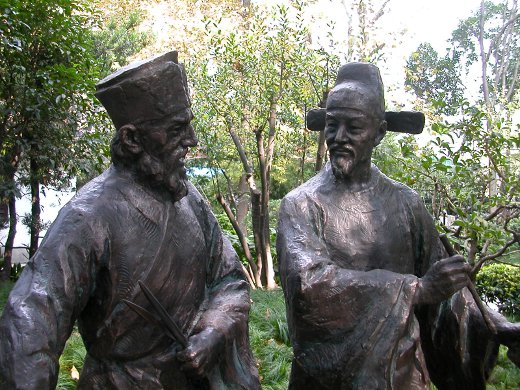The Vatican has put a Chinese Catholic scholar who lived nearly five centuries ago on track for beatification. In an Associated Press story dated April 20, Vatican spokesman Fr Federico Lombardi SJ, is quoted saying the go-ahead for the beatification cause for Paul Xu Guangqi, who lived from 1562 to 1633, was a “beautiful light of hope for China today and tomorrow.”
Fr Jerry Martinson SJ talks about the significance of the start of the beatification process for Xu.
This is hopeful news indeed for Chinese Catholics. In his pastoral letter to the Shanghai Diocese on the 375th anniversary of Xu’s death, Jesuit Bishop Jin Luxian stated that Xu “can be declared a saint without a shadow of a doubt”. It was Bishop Jin who actively initiated the process for Xu’s canonisation. Xu was a native of Shanghai for whom the city’s Xujiahui District is named.
Many Chinese Catholics believe that Xu should be canonized together with his close friend and colleague, Italian missionary and Jesuit Matteo Ricci. It was Ricci’s map of the world that caught Xu’s attention and drew him to seek out the Jesuits in Shaozhou in 1596, and in 1600, to visit Ricci in Nanjing. Xu received instructions in the Catholic faith by the Jesuits and was baptised in 1603.
Shortly after his baptism, Xu passed the Metropolitan Examination, moved to Beijing where he re-established contact with Ricci, and steadily rose to the highest office in the land, Grand Secretary to the Emperor, the equivalent of today’s Prime Minister. He worked closely with Ricci and translated many of Ricci’s writings into Chinese. Together they translated the first six books of Euclid’s Elements, introducing geometry and western logic to Chinese.
Xu collaborated with a number of Jesuit scientists, including the mathematician-astronomer, Adam Schall von Bell, and convinced the Emperor to assign them major projects such as the correction of the Chinese calendar. This led to the appointment of Schall, and a long line of Jesuits after him, to the directorship of the Astronomical Bureau for a period lasting nearly 150 years.
Xu’s close friendship with the Jesuits, and frequently heroic defence of the Society at the Imperial Court, resulted in a relationship of trust between the Jesuits and the Emperor. This relationship was maintained with successive emperors well into the Qing Dynasty and provided an umbrella of protection that allowed the fledgling Chinese Catholic Church to take root and grow.
Xu’s work and influence have been the focus of several meetings over the years. Most recently, a symposium on Xu’s influence on East-West intercultural dialogue was held in June by the Archdiocese of Naples, the University of Naples, the Saint Egidio Community, the Xu-Ricci Dialogue Institute of Shanghai’s Fudan University, and the Universita Cattolica del Sacro Cuore. An international group of scholars, including several from China, presented papers that explored Xu’s deep religious faith, his outstanding accomplishments in agriculture and the development of life-saving crops, water conservation, military reform, and various areas of scientific research.
Throughout his long and distinguished career, Paul Xu remained a faithful, zealous and model Catholic layman and supporter of the Jesuits. Fr. George Dunne SJ, author of Generation of Giants, states that Xu is “rightly regarded as the greatest glory of Chinese Catholicism.”
Xu’s beatification and canonization – together with Matteo Ricci – would enshrine these two saintly men as models for Chinese Catholics and missionaries as well. The universal Church would profit greatly by emulating their example of collaboration between clergy and laity and sincere intercultural dialogue. Without these qualities, neither Xu nor Ricci, alone, could have made such outstanding and long-lasting contributions to China and to the Catholic Church.
Top photo: Statue of Xu with Ricci near his tomb in Xujiahui, Shanghai.


